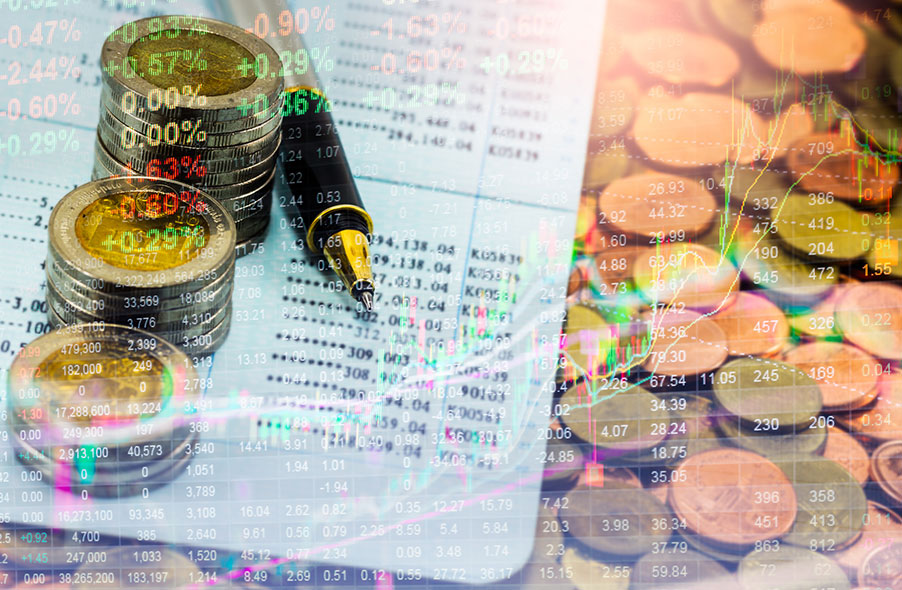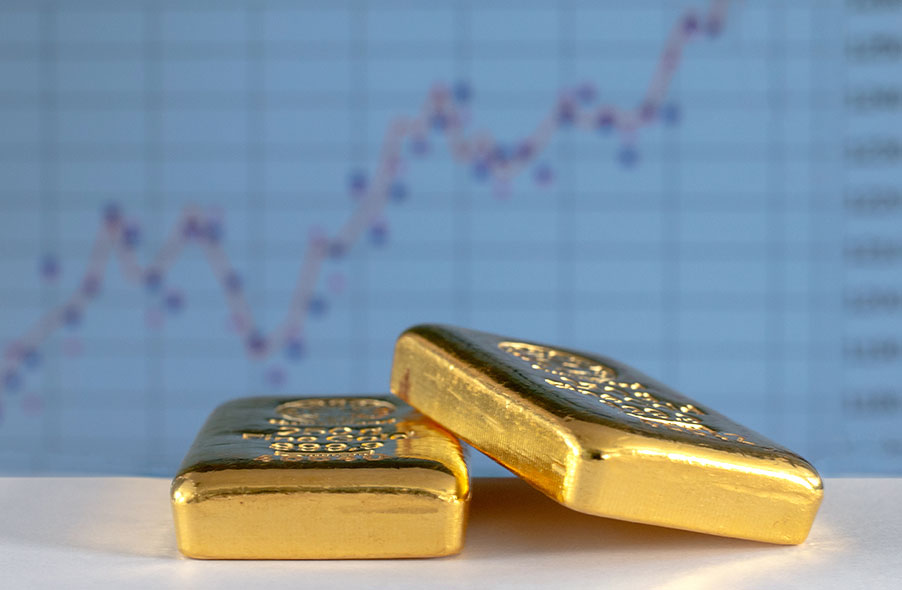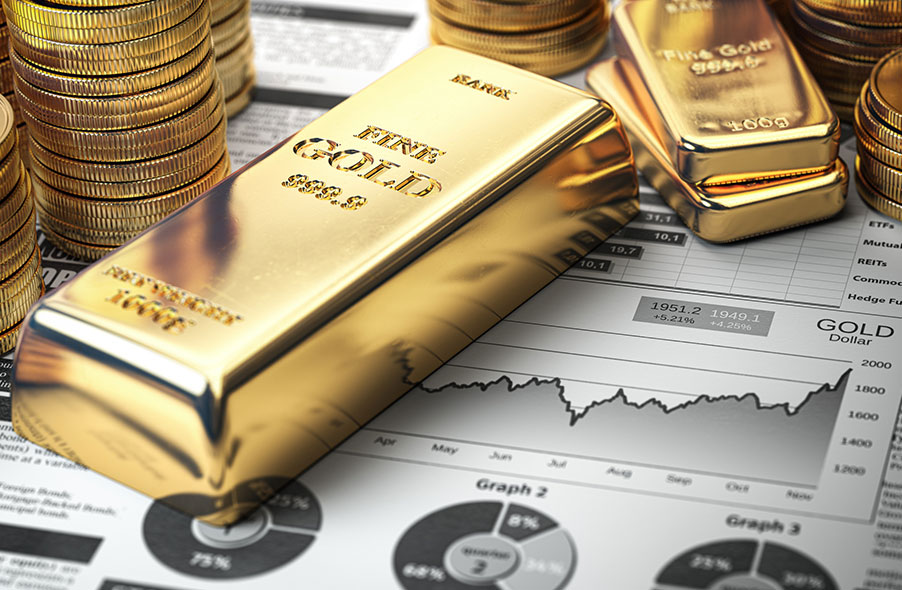People make investments for a plethora of reasons. Some want a get-rich-quick scheme to satiate their risk appetite, some want to set aside money for retirement, and some want a Lamborghini and a house on a hill like their celebrity idols. With investor profiles growing broader and more complex by the year, it’s tough to imagine that one of the most efficient investment vehicles is one of the oldest, most ubiquitous metals on Earth: gold.
Gold is one of the most storied metals on Earth, and it has held its value through innumerable centuries. Even in the age of space travel and smartphones, it is still sought-after as an investment by market newbies and veterans alike.
However, millennials are joining the fray with a different set of values. They’re no longer after the materialistic visions of generations past. They invest in clean energy, conflict-free jewelry, farm-to-table foods. In light of all this, is gold still a good investment?
If you’re wondering if gold is a good investment, here are eight factors you should consider before investing in gold – or any other precious metal.
1. Gold Keeps its Value
Most investments suffer from entropy and devaluation. If you buy a house or a condo today, its value might decrease in 10 or 20 years, depending on how the markets behave. Gold is an investment that doesn’t depend on market sentiments.
Since the dawn of humanity, merchants and traders have used precious metals to barter. While most metals that were precious long ago have decreased in value due to the discovery of rarer metals and new mining techniques, gold and silver have retained their worth, sometimes even increasing in value because of the devaluation of national currencies.
Pure gold is a soft mineral, so it has to be alloyed with harder metals like copper, palladium, platinum, or zinc before you can use it as jewelry or store it in the form of bars. However, both pure gold and gold alloys are highly resistant to moisture, so it will never rust, corrode, or deteriorate, no matter how many centuries it’s stored. This quality makes gold a popular heirloom, wedding ring material, and luxury watch component.
2. The Value of Money Doesn’t Affect Gold

Up until the early 1900s, American currency used to run on the gold standard, meaning the government didn’t have the right to decide what money is worth. If America sold gold at $699 per ounce, which is a value set by the vendors, suppliers, and customers of its free markets, the dollar would be worth 1/699th of an ounce of gold. Until America abandoned the gold standard in the 1930s, the value of money was determined by the price of gold.
Today’s fiat money can rise and fall based on people’s sentiments, perceptions, and actions. For example, due to rampant corruption, smuggling, and heavy taxation, the government of Greece declared bankruptcy not too long ago, revealing severe blind spots in the European Union’s political and monetary systems. The Venezuelan bolivar has plummeted in value since the country underwent hyperinflation, with VEF 1 million only worth $0.11 in the States today.
Gold is independent of the value of fiat currency. Wherever you go in the world, there will always be jewelers, corporations, and governments looking for gold, and they are running on a limited supply. No matter how healthy or abysmal a country’s currency is, the value of gold has remained stable regardless of national debts, trade deficits, and money supplies.
3. A Shield against Geopolitical Turmoil
Even today, many dictatorships run unchecked all over the world. In totalitarian crises, it’s not uncommon for governments to take control of a nation’s resources, and precious metals rank high on their priority lists. There have been many people who have made investments in national assets like oil, copper, uranium, and many more, only to see it turn to dust due to geopolitical turmoil.
People call gold a “crisis commodity” because people turn to it whenever international tensions grow. It has outperformed nearly every other investment in times of war, calamities, and economic collapse with great ease. Even in the housing crisis in 2008, which is arguably the worst downturn that many people alive today have faced, the price of gold peaked instead of devaluating.
4. A Moat against Depression
Bankers all over the world know that gold is synonymous with financial buzzwords like “hedge,” “moat,” and “shield.” If you want to hedge or to moat against depression, you need to make investments that will stay untouched if the economy crashes. Economic downturns usually involve a chain reaction in which hundreds of thousands of people lose their jobs, sell their homes, and get out of the stock market.
Gold is an excellent moat against depression because, as previously mentioned, it is indifferent towards the value of a local currency. During the Great Depression of the 1930s, many Americans sunk into poverty, but instead of adjusting to the environment and lowering its value, gold increased in purchasing power even as other precious metals devalued.
5. Protects You against Deflation and Inflation

Deflation and inflation are financial principles that dictate the cost of everything. The higher the inflation rate, the less your money will be able to buy. The higher the deflation rate, the more you can buy with less money.
High deflation rates are great on paper, but if you’re an investor, the prices of the commodities you’re backing will be lower, and the companies that sell them might make less of a profit. In the case of precious metals, high deflation rates can be especially damaging to your portfolio as the metals you’ve bought at a higher price will be worth a little less, and high deflation periods can last for years.
High inflation rates are terrible for everybody, especially when wages and employment numbers are stagnant. Inflation rises when raw materials, production costs, and ironically, employee wages skyrocket. However, it can also go up from a pent-up need for resources and services and not enough supply.
If you’re wondering if gold is a good investment, note that gold has historically held its ground against inflation. Periods in history where gold has decreased in market value are few and far between, and it has never experienced an extended slump, only sudden drops followed by immediate rebounds.
In the stock market crash of 2008, gold’s value hit a milestone of $1,000 per ounce. In 2012, when people were suffering the ripple effects of the crash, gold’s value hit a record high of $1,900 per ounce, which cemented its legacy for many baby boomers as a hedge for inflation that’s better than real estate.
6. People Will Always Want Gold
Because gold is such an ancient metal, you might think that people have run out of ways to use it. However, in the 21st century, gold’s uses have exponentially increased and have long left the tombs of pharaohs and jewelry boxes where they stayed for millennia.
There’s a good chance that you’re carrying gold on you right now, and you might not even know it. Gold is in the microchips that power every smartphone, Apple device, and calculator. The World Gold Council estimates that every mobile phone has at least 50 milligrams of gold inside it.
Gold leaf is in everything, from expensive entrees and desserts to the vaulted roofs of structures like the St. Michael’s Cathedral in Ukraine. Scientists also use it in aerospace technology. NASA uses gold-leaf-coated polyester to divert radiation from astronauts’ suits, which is many, many times more powerful than what people experience on Earth.
Across the world, there are always countries, corporations, and individuals looking for their fill of gold, and demand is likely to stay strong for millennia to come. The price of gold will increase as the planet only holds a limited supply, and the need for it is virtually endless.
7. Gold Makes You Immune to Depreciation from Supply and Demand

The world’s economies run on two forces – supply and demand – that determine the price of goods and services. When something is hard to get, like aviation fuel or uranium, its prices soar, and accessibility drops. When something is rare, like rhodium, a Maybach, or a guitar signed by Jimi Hendrix, the same principle applies.
Gold is rare, but not so much that it’s inaccessible to the general public. Gold production has been on a decline since the 1990s as the mines scaled back then took up to nearly 10 years before they became productive, and the global central banks only hold so much bullion. The price of gold has vastly appreciated since then, and you don’t have to be a fan of cars or a 60’s music enthusiast to appreciate its beauty.
Is Gold a Good Investment?
The worth of gold can go up and down in the medium term, so it’s not an investment for people looking to make a quick buck. Gold is a good investment for people looking to save for the future.
Gold has proven its value long before the stock markets of the world learned how to price it, and it has served as a reliable shelter against government and economic collapses for millions of people. If you’re debating if gold is a good investment for you, you can learn by visiting learnaboutgold.com and choosing from a host of reliable Gold IRA companies. Compare two or three investment providers, and see how you can make the most out of your precious metals investment.





